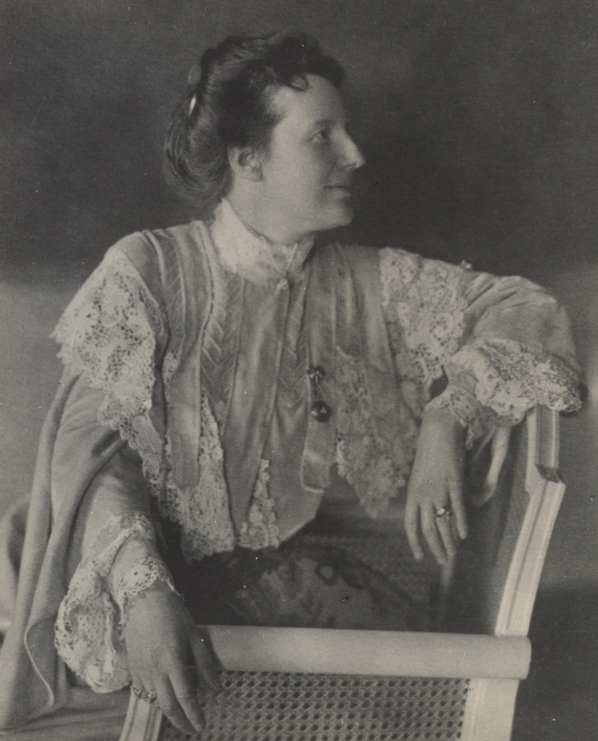
Edith Roosevelt.
So often in life when we’re close to someone we know well or even closely follow the life of a public person, it is easy to assume we know how they will continue to conduct their life.
And, the truth is, we never really know.
The second wife of President Theodore Roosevelt (Administration 1901-1909), Edith Carow Roosevelt had a clear sense of what the public expected of a First Lady and what she expected of herself as a wife, mother and housekeeper. She tried to match the first without compromising the latter.
She worked closely with the architectural firm McKim, Mead and White during its 1902 renovation of the White House. The changes made included building the West Wing and thus removing the executive offices from the second-floor where the family quarters were located. It further made the family rooms at the west end of that hall into a cozier home with the removal of a staircase which had previously come up right into it, from the state floor below.
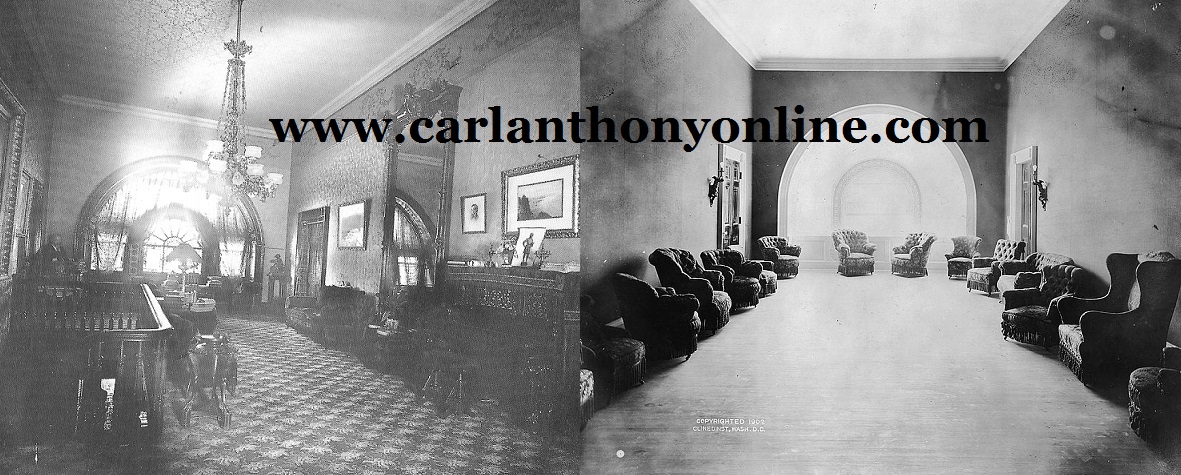
The West Sitting Hall of the White House family quarters before the Roosevelt renovation – and afterwards. (both Library of Congress)
But Edith Roosevelt always resisted cooperating with reporters and photographers eager to poke into her private life. Even the way she expressed this illustrated her deft way of deflecting attention: “One hates to feel that all one’s life is public property.”
She refused to even cooperate with the fashion reporters who insisted on knowing the details of what she would wear to different events. Her way of dealing with what them over what she considered a personal matter was to creatively describe in new and different ways the same outfits she repeatedly wore to different events.

An expert horsewoman, Edith Roosevelt was snapped by a camera fiend climbing her horse.
Most of all she disliked what she called “the camera fiends,” the newspaper and magazine photographers who first began lurking around the White House to snap pictures of her and the President and their children for publication. By 1901, the latest-tech toy everyone had to have was a Kodak Brownie camera, which allowed even the common folk to snap a scene and have a paper picture to always remember it by.
“Why do they want a photograph of me? They only need a picture of the President,” her stepdaughter Alice Roosevelt Longworth later recalled her “waxing very indignant…”

In one of the posed pictures she publicly released, Edith Roosevelt with her youngest child Quentin. (LC)
Edith Roosevelt’s method of striking a compromise was to have the noted Washington photographer Frances Benjamin Johnston come to the White House and take a series of pictures of the First Family on the South Lawn or in the hallway of the private family area, giving the allusion of intimacy while they simply posed in otherwise nondescript settings.
The lurid and provocative and almost always exaggerated stories about the First Family were especially upsetting to her. Although this intensely private First Lady happened to be married to a President who loved personal publicity, even Theodore Roosevelt fought against stories about his family. When he learned that the New York Sun was about to run a story about his daughter Alice at the racetrack, with a picture showing her collecting winnings from a bookie at the racetrack, he got on the phone with the editor and demanded that the publicity about the matter be withdrawn. It was.
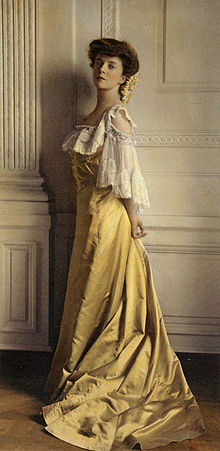
Alice Roosevelt.
Alice had her own method of compromise with what were called “the shiny sheets,” the gossips rags of the Turn-of-the-century era. She provided the editors with anonymous tips about herself and her family – and pocketed the five dollar fee given to squealers.

Edith Roosevelt from her command post, her desk in the White House private quarters
Alice thought Edith had a “withdrawn, rather parched quality.” The First Lady’s niece said she was “imperturbable as a Buddha,” and could “dominate” the President “by withholding the outward and visible signs [of] affection.” One friend quipped, “You could live in the same room with Edith for fifty years and never know what she was really thinking.”
Edith Roosevelt’s almost obsessive need to filter public information about herself and show a coldness towards family members who asked personal questions may have been rooted in lingering emotional wounds from earlier incidents in her life which she certainly did not want splayed on the shiny sheets.

Edith Carow with her father.
Daughter of an alcoholic whose business ruin led to her miserable childhood, she was also stung badly when, as a Harvard University student, the constant companion of her early years married Alice Lee of Boston – and not her. But Edith Carow had always loved Theodore Roosevelt and was determined to someday, somehow marry him.
As fate would have it, Theodore Roosevelt’s first wife Alice and his mother both died on the same day, the anniversary of which was yesterday, February 14 in the year 1884.

Puck Magazine acknowledging the Roosevelt wedding anniversary.
She also upheld Theodore Roosevelt’s belief that a woman should remain an essentially private person in the home. He insisted that a woman’s only real destiny was marriage and motherhood, instead of “any makeshift and starveling substitute.”
Edith Roosevelt entirely agreed with her husband, saying that while it was “hell on earth” to be “lonely in a mismatched marriage,” it was “far better in every way for a woman than independence.”
Ten years after the Roosevelt presidency ended, he died. Edith Roosevelt was left a widow.
And she began going public.
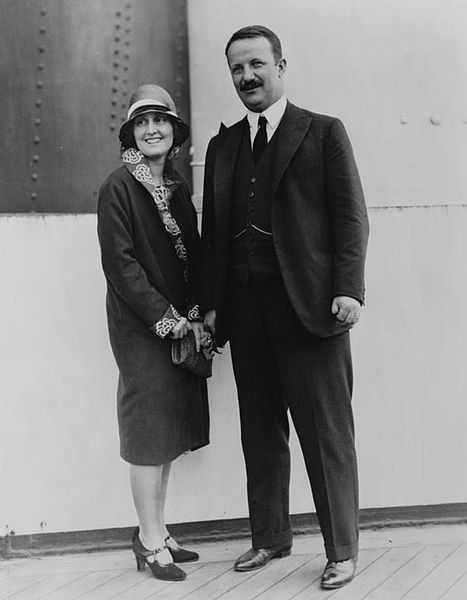
Kermit and Belle Roosevelt.
Mrs. Roosevelt traveled the world, sometimes with her adult children, sometimes on her own. She became a contributing writer to a published travel book, Cleared for Strange Ports (1927), her fellow authors being her son Kermit, his wife Belle, and her son-in-law Richard Derby, the husband of her daughter Ethel.

Alice Longworth was shocked by her stepmother’s “hideously-colored” Prohibition cocktails.
During Prohibition, she shocked even Alice by serving the “most hideously-colored cocktails,” not because she wanted a drink but because she resented the government controlling her private life.
And, at age 58, this woman who had always refused to grant a print interview, provide responses to submitted written questions or even permit a direct quote of her’s to be published, went further than anyone who knew her imagined she ever would.
Edith Roosevelt made her first “talkie,” speaking into a microphone and appearing before a newsreels camera on May 6, 1930.
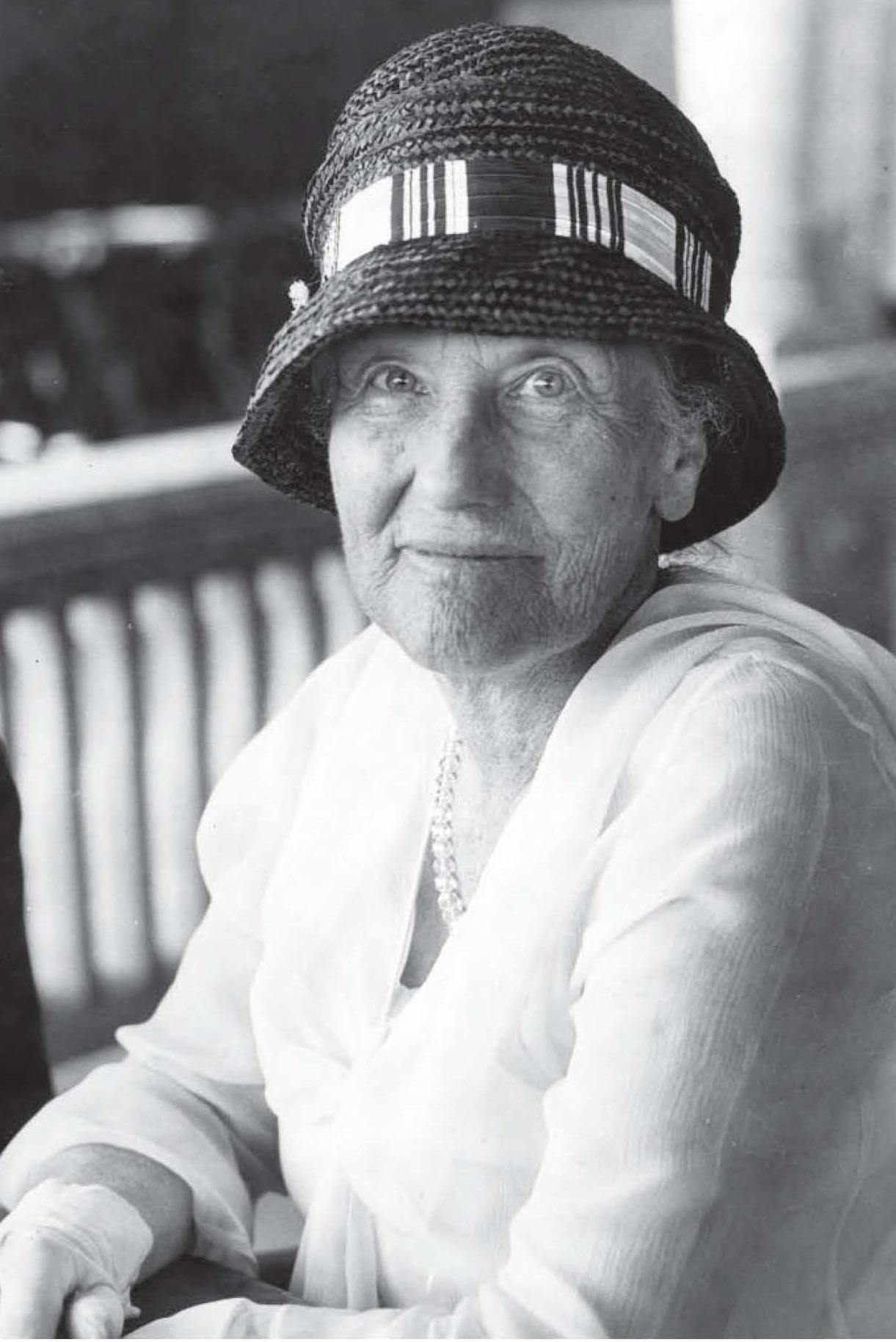
Edith Roosevelt as a former First Lady, 1932. (National Park Service)
The event was a Mother’s Day luncheon hosted by the Maternity Center Association, a New York-based organization which helped mothers of all classes and races in prenatal and post-natal care of both their infants and themselves.
The former First Lady surprised everyone by offering to do it, to help her daughter-in-law Belle Wyatt Willard Roosevelt, who was on the association board.
Belle’s husband, Edith’s favorite son, Kermit Roosevelt stood behind her, perhaps providing some support. As outtakes of the footage reveal, she nervously reviewed her written remarks before the recording began. Bell Roosevelt spoke first, then a Mrs. Sloane, and then the former First Lady.

Edith Roosevelt addressing the Madison Square Garden rally. (Edith Kermit Roosevelt by Sylvia Morris)
Sound and motion picture recordings had both been around since the 1890s, but the two technological advances had not been synched together until just three years before Edith Roosevelt spoke for the ages.
Two years later, when incumbent Republican President Herbert Hoover‘s re-election was challenged by the New York Governor Franklin D. Roosevelt, husband of Edith Roosevelt’s niece-by-marriage (Eleanor Roosevelt), the former First Lady began to receive hundreds of letters and telegrams which mistakenly identified her as F.D.R.’s mother or even wife.
While she did privately support Republican Hoover, it was the public misunderstanding of the relationship between Franklin Roosevelt and her late husband Theodore Roosevelt which led her to make one of the most overtly partisan gestures to that time by a former First Lady. On October 31, 1932 she briefly addressed a Madison Square Garden rally for Hoover by introducing him. The brief remarks were carried by newsreels and radio.
And this time, she didn’t need anyone to stand behind her in support.
Here are the two clips of Edith Roosevelt speaking:
Also present at the 1930 luncheon, but not speaking for the newsreel that day was Lou Henry Hoover, the incumbent First Lady.
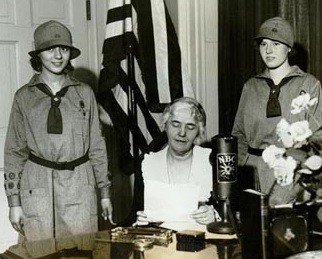
Lou Hoover makes her premier radio address. (ecommcode.com)
Mrs. Hoover had already embraced the new technology, however, making newsreels with the Girl Scouts and delivering radio addresses in 1929.
While the recording above make Edith Roosevelt the chronologically-earliest First Lady to have her voice preserved, Lou Hoover was the first incumbent First Lady to do so.
All the First Ladies seemed to be getting on the talkie bandwagon.
In November of 1929, another former First Lady, Grace Coolidge, made the first of several sound newsreel appearances, eight months after she left the White House.
Here is one of them:
An avid fan of “the talkies,” while she was First Lady, two years earlier Grace Coolidge had excitedly gone to see Al Jolson, (who had first performed her husband’s 1924 campaign song “Keep Cool and Keep Coolidge”) in his starring role in the movie The Jazz Singer, the first sound full-length feature film.
No word on what Mrs. Roosevelt thought of Mr. Jolson, but for good measure, here’s a clip of him singing “Toot, Toot, Tootsie” from that movie:
Related articles
- The Making of America Theodore Roosevelt (time.com)
- Nationals’ mascots to visit Mount Rushmore (rapidcityjournal.com)
- On the Benefits of Failure (psychologytoday.com)
- 11 Words and Phrases Popularized by Teddy Roosevelt (mentalfloss.com)
- New Nationalism (en.wikipedia.org)
Categories: Cleveland, Harrison, McKinley, Roosevelt, Taft, Wilson, Harding, Edith Roosevelt, First Ladies, First Ladies Public Image, History, Politics, The Roosevelts, Today in FLOTUS History
Tags: Alice Roosevelt Longworth, Edith Roosevelt, Franklin D. Roosevelt, Herbert Hoover, Kermit Roosevelt, Lou Henry Hoover, Lou Hoover, Theodore Roosevelt, White House
 Jackie & The Nixons: Mrs. Kennedy Returns to the White House, With New Images of the Visit
Jackie & The Nixons: Mrs. Kennedy Returns to the White House, With New Images of the Visit  Jane & Jill, Potential First Ladies: Lots in Common Between the Wives of Joe Biden & Bernie Sanders
Jane & Jill, Potential First Ladies: Lots in Common Between the Wives of Joe Biden & Bernie Sanders  All The Presidents’ Birthdays: Dance Balls to Movie Star Fundraisers in 90 Rare Photos
All The Presidents’ Birthdays: Dance Balls to Movie Star Fundraisers in 90 Rare Photos  Liz Taylor Meets Jackie Kennedy: Tabloid Fantasy to Chance Encounter & The Only Photos of Them Together, Part II
Liz Taylor Meets Jackie Kennedy: Tabloid Fantasy to Chance Encounter & The Only Photos of Them Together, Part II  Melania Trump v. John Kelly: First Ladies & West Wing Personnel, A Brief History
Melania Trump v. John Kelly: First Ladies & West Wing Personnel, A Brief History  Melania Trump’ Hospitalization: What the Public Is Told About a First Lady’s Health
Melania Trump’ Hospitalization: What the Public Is Told About a First Lady’s Health
N.B. All you people who are sooooooo sure … who “know” that Hillary Clinton will run for POTUS in 2016: No, you don’t really know. It’s her decision, so just be patient, let Hillary enjoy her free time, and stop acting like you know something about Hillary that even Hillary doesn’t know right now.
I don’t think I’ve read any one comment in the last two weeks which more concisely and accurately describes the accurate truth of the big question. I think only time leading up to the spring of 2015 will tell. Thanks for the observation – it applies to former First Ladies as well as all of us in the aspirations and intentions of our own lives.